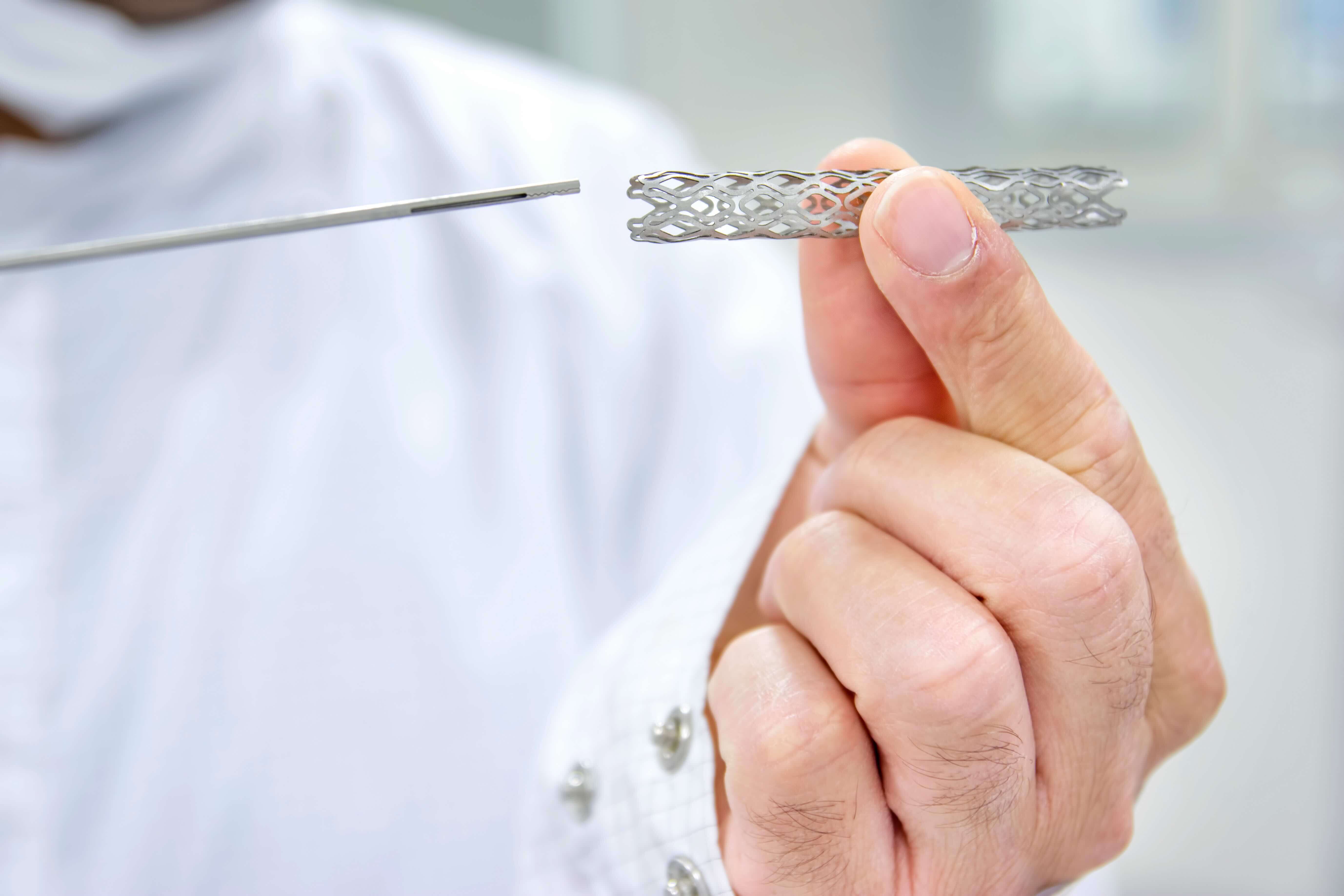Coronary angioplasty
Angioplasty is used primarily to treat coronary artery disease, which is caused by the accumulation of fatty deposits in the arteries of the heart (atherosclerosis). This pathology reduces blood flow in the coronary artery and can lead to symptoms such as:
- Angina pectoris: chest pain that occurs during exertion or stress.
- Myocardial infarction: a sudden cessation of blood flow to the heart muscle, leading to irreversible damage.
- Shortness of breath and excessive fatigue.
When medication and lifestyle changes are not enough to control these symptoms, angioplasty may be recommended.

- Before the procedure: The patient receives a local anaesthetic and light sedation. They should not eat or drink for several hours before the procedure.
- During angioplasty: A catheter is inserted into an artery in the wrist or groin and guided to the affected coronary artery. Contrast medium is injected to visualize blockages.
- Artery dilatation: A balloon is inflated to widen the artery. Most frequently, a stent is deployed to maintain the opening.
- Post-procedure: The patient is monitored for several hours before being allowed to go home the same or next day, or to be kept longer for observation in an emergency.

Coronary angioplasty offers numerous benefits for patients suffering from coronary artery disease. First and foremost, it significantly improves blood flow to the heart, ensuring optimal oxygen and nutrient supply. This improved cardiac blood supply generally leads to a reduction in chest pain, particularly that associated with angina pectoris, making daily activities more comfortable. Its minimally invasive nature also enables rapid recovery, limiting hospitalization time and facilitating an earlier return to normal activities.
However, as with any medical procedure, angioplasty is not without risks. One possible complication is bleeding or infection at the catheter insertion point. There is also a risk of restenosis, i.e. further narrowing of the treated artery, sometimes necessitating further intervention. In addition, although rare, the formation of blood clots in the stent can be a serious complication that can lead to heart attack.
In some cases, a more invasive alternative may be recommended: coronary artery bypass grafting (CABG). This surgery involves bypassing the blocked artery using a healthy blood vessel taken from another part of the body.
Coronary angioplasty is a modern and effective technique for restoring blood flow to the heart, significantly improving the quality of life of patients with coronary artery disease. However, it does not treat the underlying cause of atherosclerosis. Adopting a healthy lifestyle, controlling cholesterol and blood pressure, and taking appropriate medication are essential to prevent further blockages.